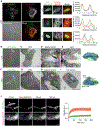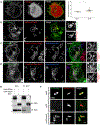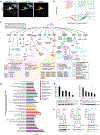The Legionella pneumophila effector DenR hijacks the host NRas proto-oncoprotein to downregulate MAPK signaling
- PMID: 38568811
- PMCID: PMC11141579
- DOI: 10.1016/j.celrep.2024.114033
The Legionella pneumophila effector DenR hijacks the host NRas proto-oncoprotein to downregulate MAPK signaling
Abstract
Small GTPases of the Ras subfamily are best known for their role as proto-oncoproteins, while their function during microbial infection has remained elusive. Here, we show that Legionella pneumophila hijacks the small GTPase NRas to the Legionella-containing vacuole (LCV) surface. A CRISPR interference screen identifies a single L. pneumophila effector, DenR (Lpg1909), required for this process. Recruitment is specific for NRas, while its homologs KRas and HRas are excluded from LCVs. The C-terminal hypervariable tail of NRas is sufficient for recruitment, and interference with either NRas farnesylation or S-acylation sites abrogates recruitment. Intriguingly, we detect markers of active NRas signaling on the LCV, suggesting it acts as a signaling platform. Subsequent phosphoproteomics analyses show that DenR rewires the host NRas signaling landscape, including dampening of the canonical mitogen-activated protein kinase pathway. These results provide evidence for L. pneumophila targeting NRas and suggest a link between NRas GTPase signaling and microbial infection.
Keywords: CP: Microbiology; cancer; intracellular pathogen; palmitoylation; type IV secretion system; virulence.
Published by Elsevier Inc.
Conflict of interest statement
Declaration of interests The authors declare no competing interests.
Figures






References
Publication types
MeSH terms
Substances
Grants and funding
LinkOut - more resources
Full Text Sources
Molecular Biology Databases
Research Materials
Miscellaneous

